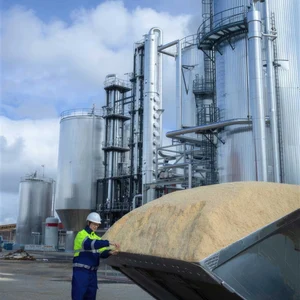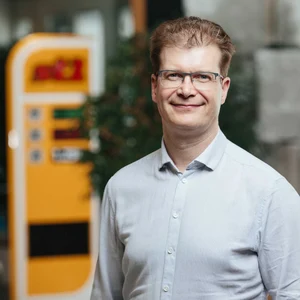The dismantling of St1’s bioethanol production plant has begun – lessons applied to new projects
The dismantling of St1’s bioethanol production plant has begun – lessons applied to new projects

St1 began bioethanol production in Kajaani, Finland, in 2017. The operation was based on St1’s Cellunolix® biorefining technology, using sawdust as feedstock. The goal of St1’s biorefinery was to verify the technical functionality of the production process and to achieve an annual commercial production of 10 million litres of advanced bioethanol. However, the production reached only about a third of the targeted amount at best. To achieve the goal, significant additional investment would have been required in the biorefinery, which was not commercially justifiable. The biorefinery was closed in 2023 due to unprofitability, and dismantling work began at the end of 2024 and will continue in 2025.
St1’s biorefinery in Kajaani was the only commercial ethanol production unit in the world that utilised coniferous sawdust (soft wood) as a feedstock. St1 sourced sawdust from the sawmill co-located at Renforsin Ranta in Kajaani and other local sawmills. The production itself was based on St1’s Cellunolix® biorefining technology, which combined pre-treatment technology used in wood processing, advanced enzymatic biochemistry, and traditional ethanol production technologies. There were plans to establish biorefineries based on the same technology elsewhere in the Nordic countries. The Kajaani biorefinery served as a demonstration unit for the concept. During its operational lifetime, 10 million litres of ethanol were produced, achieving over 82% reduction in emissions. The plant and the production chain employed 20-30 people.
Advanced ethanol fuel and by-products
The ethanol produced from sawdust was used in RE85 high-blend ethanol fuel and bio-component in gasoline during 2017 to 2023. Additionally, St1 produced and sold absolute ethanol for hand sanitiser production throughout the COVID-19 pandemic.
The production of bioethanol also generates various by-products, depending on the feedstock used. When sawdust is used as feedstock, also lignin, vinasse, turpentine, and biogas are produced. Nearly a third of softwood is lignin, which was intended to be valorised in full. However, using lignin as a high value renewable material to replace fossil alternatives proved problematic—first technically, then commercially. Its reaction in the plant’s reactor caused equipment fouling and clogging, despite numerous collaborative projects with companies, research institutions, and universities, lignin could not be commercialised and utilised profitably.
Patrick Pitkänen, Venture Development Lead, explains: “There weren’t sufficiently developed markets for lignin so that it could replace materials like plastic or other similar alternatives. Had that been the case, its value would have been far greater than simply burning it. A breakthrough in more valuable applications would have taken several more years, which significantly delayed investment plans for a larger plant.”
Pitkänen, now responsible for collaboration development at St1 and involved in the project from the beginning in various roles, adds: “It doesn’t make sense to run an unprofitable demo plant for years. That’s why St1 decided to focus on other projects that would realise more quickly.”

Patrick Pitkänen, Venture Development Lead
Lessons learned from solid biomass applied in St1’s other projects
Although the production at the Kajaani biorefinery ended, the lessons learned in the project’s duration have been transferred to benefit new projects. The knowledge gained is being utilised, for example, in the planning and business development of Suomen Lantakaasu and Biorefinery Östrand. The acquired technical expertise in areas such as equipment procurement for production processes, material selection, safe production operation, change management, and making various business agreements continues to provide lasting benefits.
“It is unfortunate that, despite all our efforts, bioethanol production in Kajaani did not become profitable, and our cellulosic ethanol chapter is closed. However, I am proud that we attempted this on a large scale and gained invaluable experience over the years. These will be utilised in the future development of other projects,” Pitkänen sums up.